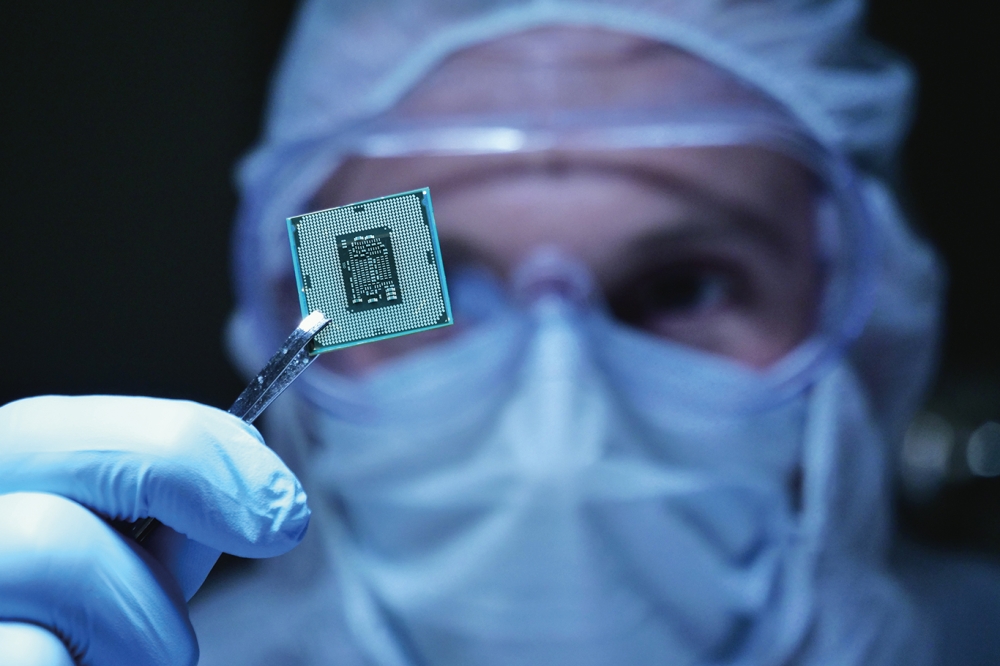Chip, Chip, Hooray! Addressing connected semiconductor and chip growing pains

In almost every industry, a connected tech revolution is underway. The rise of the Internet of Things (IoT), artificial intelligence (AI), and 5G has ushered in an era of unprecedented connectivity and automation. Yet, with this wave of progress comes a great demand for those unassuming pieces of silicon that are needed to power this new era of connectivity: semiconductors.
By Michael Cantor, CIO, Park Place Technologies
Microchips are not mere components, but the bedrock of innovation and infrastructure. And businesses of all sizes are facing a critical juncture, where managing the surge in chip need is essential for growth.
The memory of the 2020 shortage is still fresh in the minds of businesses and governments alike, making semiconductor production a lightning rod for strategic investment in Europe and the UK. In a declaration of intent, the UK and the EU have both announced ambitious plans to boost their semiconductor industries. The UK is set to spend £100m in the global race to produce AI chips, alongside the already £1 billion committed to the sector, and the EU has passed the EU Chip Act. These initiatives are a recognition of the importance of semiconductors to the global economy.
Businesses based in countries that are not prepared for the new strategies and challenges could face significant disruptions. They could be forced to delay or cancel product launches, lose market share, or even go out of business. Luckily, there are opportunities to mitigate these impacts, from creating chips in-house to supercharging a circular economy.
Combating a chip squeeze
Diversification emerges as a practical strategy, involving the sourcing of components from various geographic locations and suppliers. Collaborative efforts across governments and industries can enhance resilience by nurturing a diverse pool of talent and expertise, in turn reducing reliance on a single source.
There are several routes to diversification. These include changing their chip suppliers, investing in chip inventory, developing contingency plans in case of supply disruptions and investing in research and development to create new chipless technologies.
One of the fascinating developments in the realm of chipless technologies is Radio-Frequency Identification (RFID). RFID is a wireless communication technology that allows for the identification and tracking of objects using electromagnetic fields. Unlike traditional silicon-based chips, RFID does not require an integrated circuit (chip) and instead relies on Antennae, a printed or etched conductive material. Already, RFID is crucial in manufacturing by enabling real-time visibility and automation of critical processes, from production to inventory management. Today’s consumers are more demanding than ever, and often, only advanced RFID solutions allow businesses to meet these heightened expectations.
The development of such chipless technologies demonstrates how innovation can lead to more efficient, cost-effective, and versatile solutions that address a variety of business and societal needs.
Taking matters into their own hands
Although hard to imagine, it’s true that the world’s most important advanced technology today – AI chips – are nearly all created by NVIDIA and produced by a single company. The Taiwan Semiconductor Manufacturing Company (TSMC) makes all the chips that enable modern AI.
However, the trillion-dollar semiconductor supply chain and rapid advances in AI has brought businesses to a crisis point. Today, adapting to the evolving semiconductor landscape demands more than reactive planning. Many larger businesses are now looking to create their own supplies of semiconductors.
For example, in a bid to capitalise on emerging technologies and reduce reliance on NVIDIA, AWS is now developing two types of microchips that will be used to train and run AI models. And Microsoft is doing the same, designing an AI chip code-named “Athena” to power the technology behind AI chatbots.
Taking matters in-house will enable many enterprise-level technology firms to meet the demand of their customers by more effectively responding to market demands without the complications of international supply chains, and accelerate innovation by collaborating even more closely with research teams and having easier access to cutting-edge technology. This can be particularly advantageous for industries dependent on rapid technological advancements, such as electronics and automotive.
Seizing a circular economy
A circular economy mindset will also be key when it comes to semiconductors, as many precious metals and minerals that are needed to create new chips are hidden away in back drawers or piles of e-waste. This mindset transcends the traditional linear “take-make-dispose” model of production and consumption, aiming to reduce waste, conserve resources, and enhance supply chain sustainability. This is especially important as the UK generated the second largest amount of e-waste as a country in 2022, and this is a mounting issue with the UK set to be the worst country in 2024 unless action is taken immediately.
Elements like gold, silver, and copper, which are present in semiconductors, can be recovered through responsible recycling processes. This not only conserves precious resources but also reduces the environmental impact associated with mining and manufacturing these materials.
A circular mindset also encourages a shift toward designing semiconductors with sustainability in mind. This involves optimising chip designs for recyclability, ease of disassembly, and reducing hazardous materials. By adhering to principles of eco-design, businesses can create chips that are not only high-performing but also environmentally responsible.
Circular semiconductor management thrives on collaboration between businesses, consumers, and recycling facilities. Establishing closed-loop systems, where used chips are collected, refurbished, and reintroduced into the supply chain, can minimise waste and promote resource efficiency. By involving various stakeholders, including manufacturers, suppliers, and end-users, a closed-loop approach fosters a holistic and sustainable semiconductor ecosystem.
Ultimately, chips represent a journey towards a future where innovation and pragmatism converge to reshape industries, redefine connectivity, and carve a path towards a smarter, more interconnected world. As Europe stands on the cusp of this new chapter, businesses that harness innovation with a circular mindset, while ensuring resilient supply chains will be key in shaping a future where innovation and adaptability coexist.

































